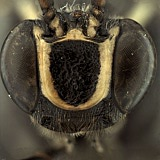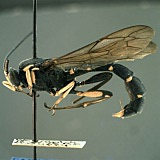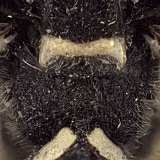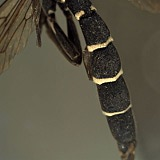Metopius basalis Cresson , 1879
Metopius (Peltastes) basalis heinrichi Townes and Townes, 1959
Metasomal tergites 3 to 5 each with an ivory apical band or apicolateral pair of spots. Transcontinental across northern U.S. and southern Canada.
Metopius (Peltastes) basalis basalis Cresson, 1879
Metasomal tergites 3 to 5 entirely black. Known from Georgia and Florida.
There are no specimens currently determined for this OTU, or those specimens determined for this OTU are not yet mappable.
This material is based upon work at Texas A&M University supported by the National Science Foundation under Grant Number DEB 0328922.
Any opinions, findings, and conclusions or recommendations expressed in this material are those of the author(s) and do not necessarily reflect the views of the National Science Foundation.





